Temper
Air Conditioning Loads and Temperatures
The computer program TEMPER was developed by the CSIRO. It calculates the sensible and latent air conditioning heating and/or cooling loads for a specified indoor air temperature and humidity within the various air conditioned zones of a building. Alternatively the program can calculate the indoor air temperature in these zones given a specified heating or cooling effect. Provision is also available to model plant failure so that the time to reach a particular indoor temperature can be estimated.
The heat flow through all solid boundaries is calculated over short time increments by finite difference numerical methods using the specified climatic and internal loads. Thus full account is taken of the thermal storage effects of the structure of the building.
Although the program is still a DOS program, it is a very useful program for estimating temperatures in unconditioned spaces or when the air conditioning plant fails

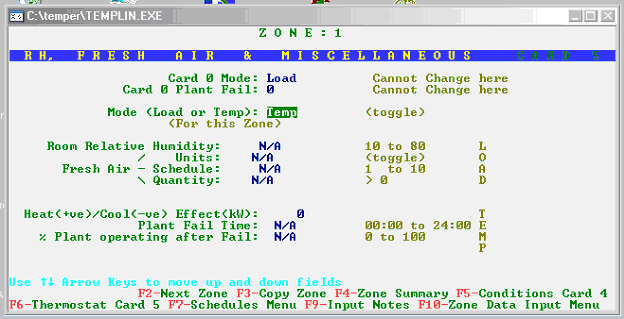
The Screen Where Zones are Nominated as Being in Temp or Load Mode
FEATURES
- The program models spaces (zones) in a building operating in one of two modes:
(a) In LOAD mode the program calculates as a function of time over the period of one day the heating or cooling effect required to maintain the specified internal design conditions.
(b) In TEMP mode the program calculates the space temperature for a specified cooling or heating effect. - Individual zones in a building can be nominated to operate in either the LOAD or TEMP mode thus providing for the effects of temperatures in ceiling plenums and other adjacent unconditioned spaces when determining space air conditioning loads.
- In the TEMP mode the space temperature of individual zones can be controlled by a specified heating or cooling effect, or a constant cooling air, ambient air or evaporative cooling system. The temperatures at each hour when there is no air handling system present can also be estimated.
- The input file for TEMPER, is compatible with that needed for the companion program BUNYIP which estimates the annual energy consumption of a building.
- The program can also be operated in a plant fail mode wherein specific zones can have their air conditioning plant fail to a specified percentage level. The resultant temperature in the space can be printed out for up to two days after the plant fails.
- TEMPER being based on a fundamental heat transfer model is quite versatile in the type of building it can handle. For example, the user is not restricted in choice of orientation of facades, and walls and windows as well as roofs may be non?vertical.
- People, lights, infiltration and equipment can be entered as internal loads each with its own operating schedule. These schedules can be on/off or off/on step functions or can be time profiles with up to 12 time steps.
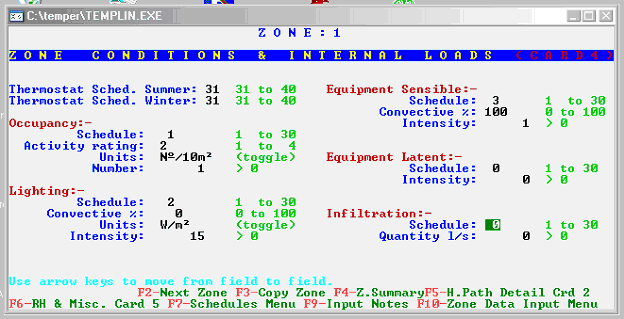
The Internal Loads Screen
- Provision is made for dumping the hourly zone temperatures to a file for subsequent “importing” into spread sheet programs like Xcel etc.
- Shading of windows from overhangs and left and/or right reveals is provided for.
- The program provides for ground reflection of solar radiation in calculating the heat gain through external walls & windows.
- Building section data can be “built up” by specifying the thicknesses and material types of the individual components in the walls, roof, etc. Material thermal properties for a range of materials and air spaces are stored in the program.
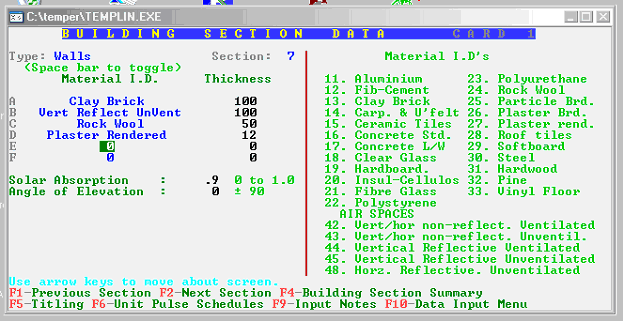
The Building Section Data Screen
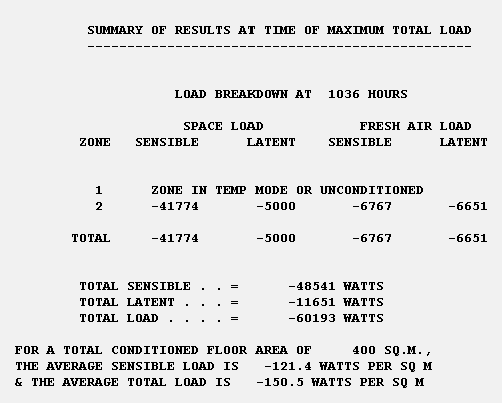
Summary Results Showing Total Loads at Time of Peak
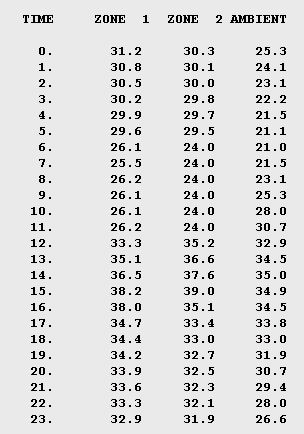
Typical Hourly Temperature Results
FEATURES
- As well as providing a summary of the loads, the program provides various tables displaying the breakup of the hourly loads by component and a table of temperatures at each hour (and at finer time increments immediately after Plant Failure). Although the program is not WINDOWS based, it is a very useful program, particularly for predicting space indoor temperatures.
- TEMPER is a suite of programs comprising:
- TEMPLIN – a data input program called TEMPLIN developed by ACADS-BSG to enably easy entry of data and to create the input file for TEMPER
- BUNYED – a program to check the TEMPER input data file for any errors.
- TEMPER – the main calculation program.

